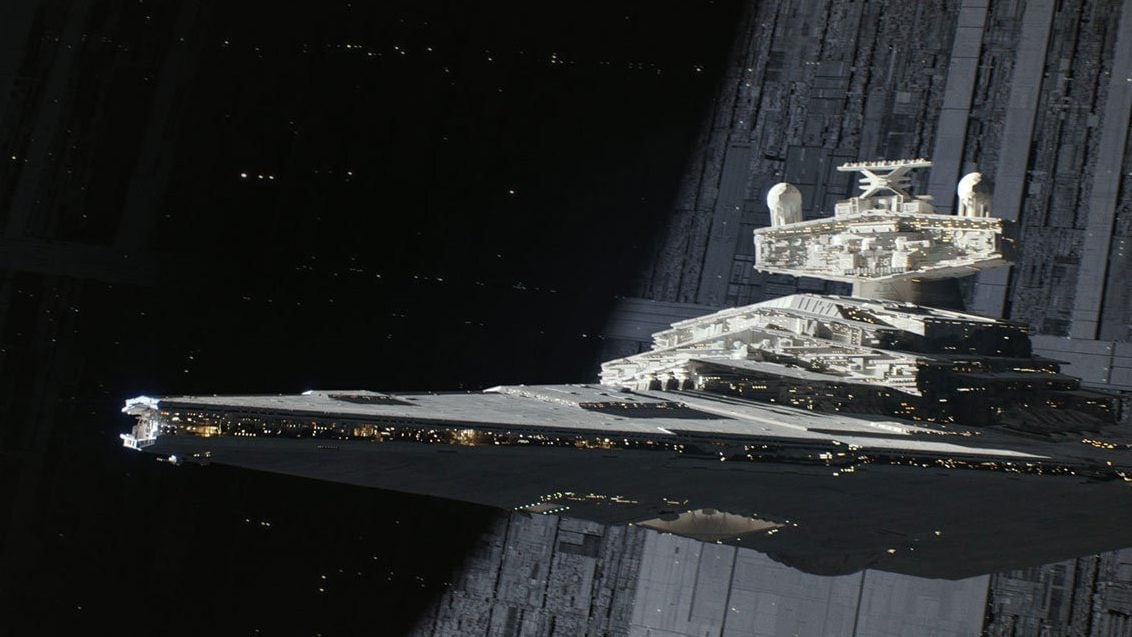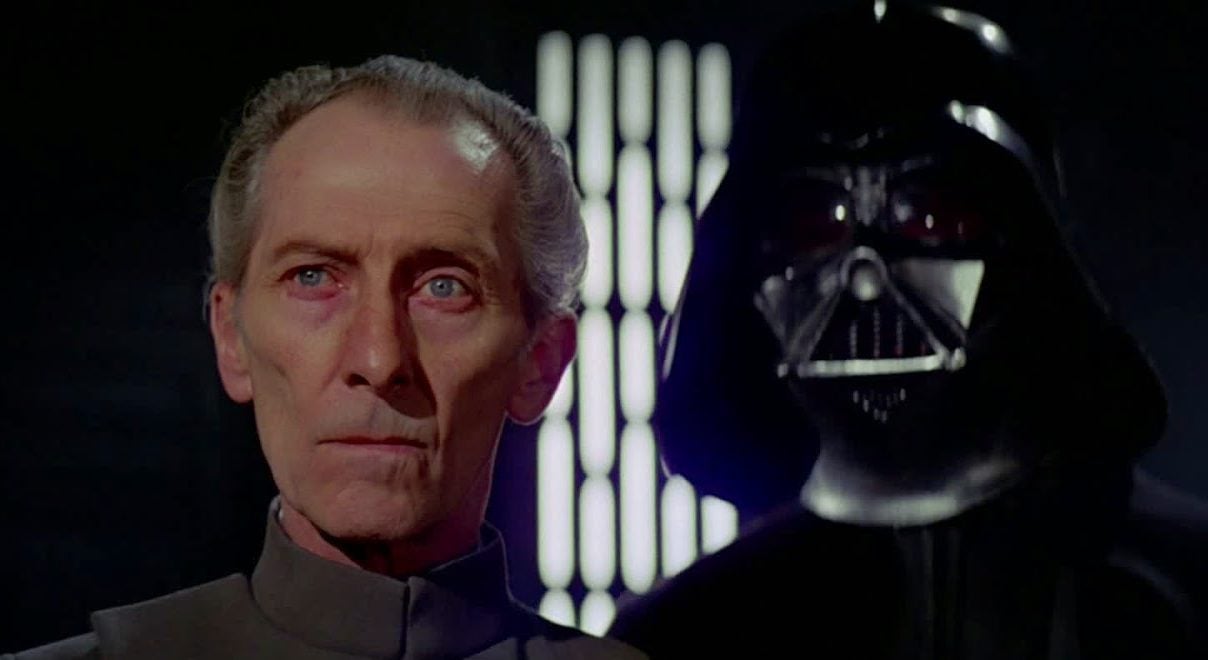“Rogue One: A Star Wars Story” features a computer-generated character more controversial than Jar Jar Binks
This story reveals a plot element in Rogue One: A Star Wars Story that some readers might consider a spoiler.


This story reveals a plot element in Rogue One: A Star Wars Story that some readers might consider a spoiler.
More than 20 years after his death, Peter Cushing is acting again.
The award-winning British actor, who died in 1994 at the age of 81, reprises his role as Death Star commander Grand Moff Tarkin in Rogue One, the Star Wars anthology film that came out last week. Cushing first played the villain in the original Star Wars film, released in 1977, when he was very much still alive.
No, Disney has not yet figured out how to reanimate the dead (though perhaps that’s next?). Rogue One‘s Cushing is a computer-generated recreation of Cushing. Actor Guy Henry acted the role on set, before he was digitally rendered into a Cushing clone. The thing we see on screen looks a lot like the deceased actor, but is nothing more than his guise, a model of his likeness as accurate as a computer could make it.
The result is a CG character much more controversial than the infamous Jar Jar Binks, the universally despised and borderline racist computer character from The Phantom Menace. Critics are sharply divided about both the ethics of employing the services of a dead person (though the filmmakers did have permission from Cushing’s estate to feature his likeness) and also the effectiveness of this particular achievement.
Disney has not released any publicity stills of the CG character, but here’s the man it’s modeled on:

Indiewire hosted a great discussion on the subject: Critic David Ehrlich called it a ”blight upon the most beautiful ‘Star Wars’ film to date, its presence squeezing the air out of several different scenes.” Time Out’s Joshua Rothkopf, meanwhile, appreciated the attempt, and pointed out that the Star Wars franchise itself is really just one giant corpse brought back to life. New Yorker critic Richard Brody didn’t even notice that the character was computer-generated.
Other sites have held similar discussions about the CG character, with results ranging from “distracting” to “realistic,” “alarming” to “impressive.”
Personally, I found the character to be a monstrosity. Its skin is ghastly and translucent. Its mouth does not move as a human’s mouth should. Its voice, performed by a mimic, sounds only vaguely like Cushing’s did. It is the very definition of the uncanny valley—an unsettling, artificial humanoid plopped down right in the middle of scenes with actual human actors.
Used sparingly (as with a CG-rejuvenated youthful version of Carrie Fisher as Princess Leia), it might not have been so distracting. But Tarkin is a major character in the film, and I found it impossible to pay attention to anything it was saying as I tried to wrap my head around what exactly I was looking at.
One’s reaction to the reanimated Cushing likely depends on two things: Whether or not you’ve seen the original Star Wars films, and whether you knew Tarkin would appear in Rogue One before seeing it. My theater companion neither saw the original nor expected to see a computer-generated character, so she didn’t even notice anything was amiss—until I told her and ruined it. But for people who know of Cushing’s role in the original film (and know the actor has since passed away), Tarkin’s uncanny existence in Rogue One was a distraction from an otherwise colorful, energetic film.
Mixed results aside, the fact that Tarkin was able to fool anyone is remarkable, the mark of film technology that has advanced far beyond what anyone in 1977 could have imagined possible. Computers are taking all the other jobs, so perhaps acting is next.